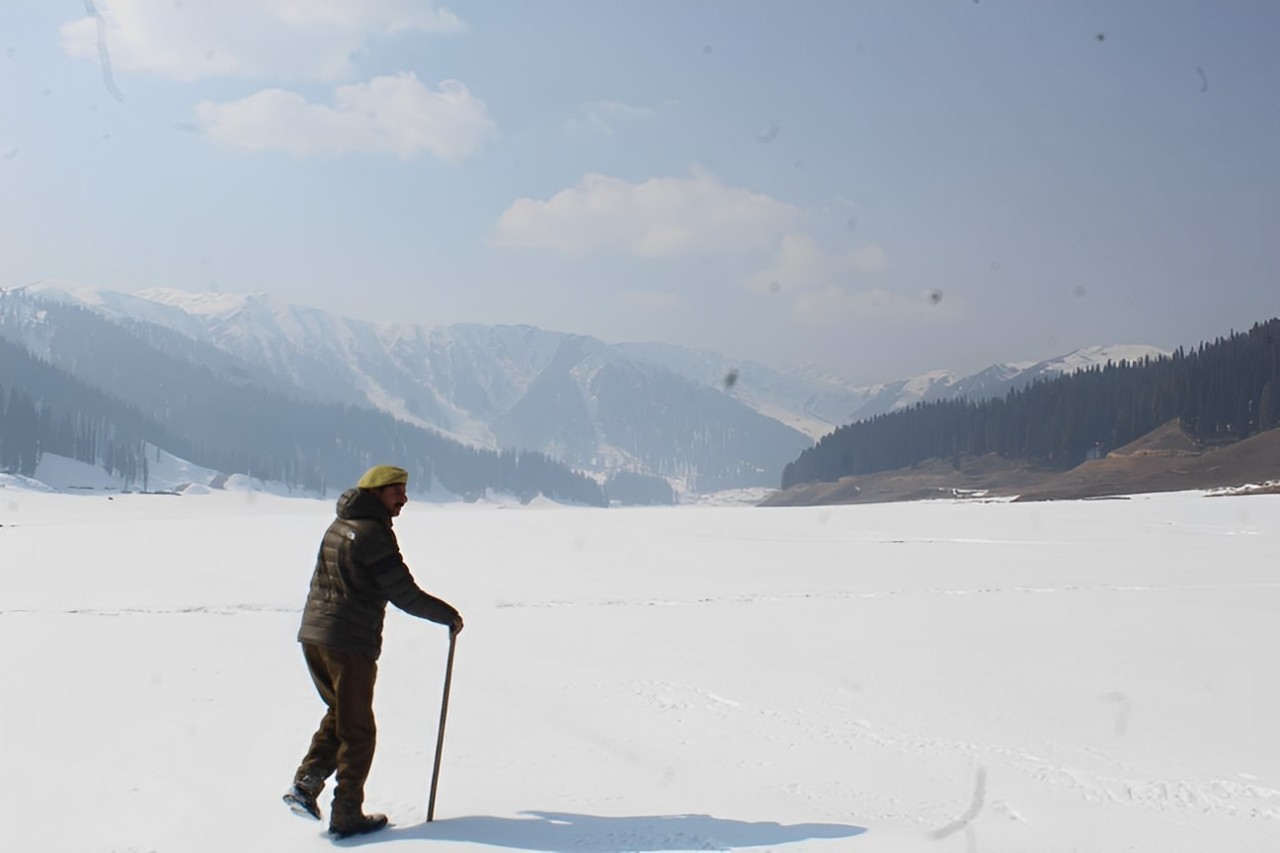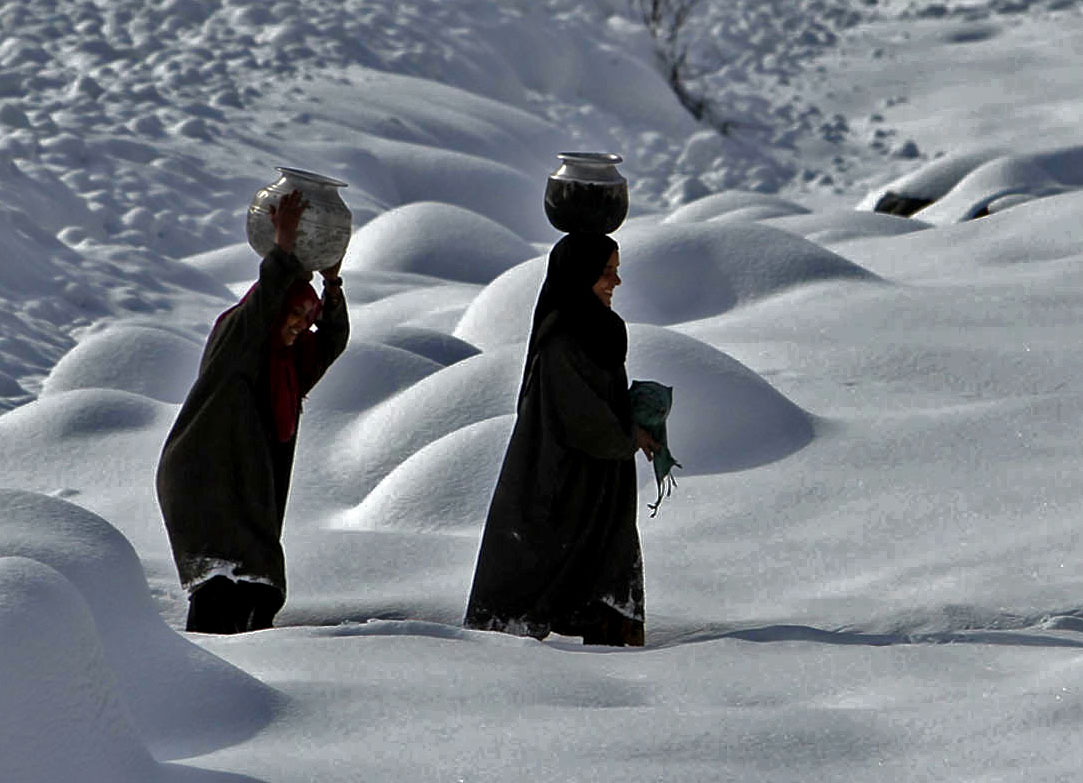by Shaheen Safdar
In the long nights of Chillai Kalan, the cherished tradition of listening to Kashmiri tales (Daleel) was a common pastime for children. Typically narrated by the eldest family member, often a grandmother or grandfather, this practice thrived in an era before digital entertainment such as cartoons and video games gained prevalence.

Snow is crucial to Kashmir, akin to blood in the human body. Its heavy winter snowfall signals a promising summer. The frozen snow on mountains and highlands ensures a steady flow in streams and rivers during hot seasons, preserving the region’s beauty. Midwinter snow excites agriculturists as it guarantees ample water for rice fields in summer.
The white snow blankets mountains, gorges, meadows, and plateaus, transforming Kashmir into a magical land that captivates adventurers, pleasure seekers, and commoners alike. Sparse snowfall leads to a poor harvest, making the sight of thick snowflakes falling a joyous occasion for Kashmiris, prompting greetings among them.
Experiencing a Kashmir winter is essential for understanding its charm. Locals cherish the Chillai Kalan season as a time for leisure, enjoyment, and festivities. Traditionally, they celebrate with harissa, a mutton delicacy served with fresh bread, followed by a cup of nun chai.
Kashmir has observed a notable decline in snowfall in recent years, impacting the ongoing winter season significantly. The lack of snow has led to a substantial reduction in tourist visits, adversely affecting both businesses and the region’s cultural heritage.
Various critical aspects, including tourism, forest fires, agricultural droughts, hydroelectricity generation, glacier melting, and drinking water supply, are now facing challenges. However, it is the swift erosion and transformation of Kashmir’s culture and customs that stand out.
Traditionally, the people of Kashmir displayed a graceful and glorious preparedness for winter, stocking up on essentials like woollens, especially the pheran, as well as charcoal for the kangir and wood for the hammam. These preparations were made well in advance of winter’s arrival.
Noteworthy were the practices of elderly ladies expertly sun-drying vegetables during summer, ensuring a reliable supply throughout the year. However, these traditional methods are gradually fading away, with a shift towards modern tastes and fast foods, resulting in fewer individuals appreciating the cultural significance of sun-dried vegetables.
Winter in Kashmir, particularly during Chillai Kalan, is a time traditionally marked for leisure and festivities. In the old city of Srinagar, vendors selling harissa find their stalls crowded during the early hours of chilly mornings. However, a shift towards social media and the increasing influence of materialism have altered these cultural practices, contributing to a sense of sombreness.
The present generation is largely unfamiliar with the Kashmiri Pandits’ tradition of celebrating khartchi maavas on the Amavasya of Poh, occurring in mid-Chillai Kalan. On this special day, they prepare khartcher, a dish made of split pulses and rice, as an offering to Kubair, a nature spirit believed to be the custodian of wealth.
Kubair, akin to the Santa Claus of Kashmiri Pandits, is thought to visit them on chilly winter nights to distribute wealth and gifts. The offering, including a khartcher, flowers, and a burning lamp, is placed outside the living space at night. Legend has it that whoever manages to take Kubair’s cap and keep it under the hand is bestowed with wealth. Non-vegetarian offerings of mutton or fish are made, while vegetarians opt for cheese instead of meat.

In the long nights of Chillai Kalan, the cherished tradition of listening to Kashmiri tales (Dalleel) was a common pastime for children. Typically narrated by the eldest family member, often a grandmother or grandfather, this practice thrived in an era before digital entertainment such as cartoons and video games gained prevalence. Snowfall, a time of great enjoyment for children, meant walking over fresh snow, leaving footprints, and relishing the crispy sound it produced.
Traditional wooden sandals, known as khraav, and the pulhor, made of paddy straw, once common footwear, are now preserved in museums for future generations.
The cultural imprint of customs like sheen short (snow bet) endures in written records. Dating back through the years, Kashmiris have followed the sheen tradition. On the first day of snowfall, people play light-hearted pranks on each other. A common jest involves concealing a piece of new snow in paper or another item, passing it to a friend as if something important, or applying snow to the bottom of a kanger and asking a friend to hold it temporarily under the pretence of urgent work. If the friend opens the wrapped paper or holds the kanger, they become the subject of laughter and a nominal forfeit.
(Ideas are personal.)















